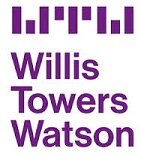Pain using a non-adjustable chair is a common problem. Are you using a fixed chair working at home? Does you working day require you to sit most of the day?
 Pain using a non-adjustable chair with few or no adjustments can occur in meeting and conference locations. Working from home on a fixed chair can be uncomfortable.
Pain using a non-adjustable chair with few or no adjustments can occur in meeting and conference locations. Working from home on a fixed chair can be uncomfortable.
Healthywork provide a DSE Risk Assessment to assess your work seating, prevent discomfort and ease minor aches and pains. This fulfils responsibilities under the DSE Regulations 1992. Or a more in-depth Ergonomic Assessment to further review the seating you use and ensure you have the correct chair for your health needs, to fulfil Reasonable Adjustments under the Equality Act 2010.
Contact Us today.
Problems & Solutions to ease pain using a non-adjustable chair:
| Seat feature | Problem | Solutions |
| Seat height:
|
Fixed, so it may be too low (knees higher than hips)
and/or Too low for the arms to be at the correct height for keyboarding on the table and /or Too high (feet cannot touch floor). |
Sit on a cushion if the seat is too low, so the seat and hips are higher until the hip to knee is horizontal or the knee is slightly lower than the hip.
Also for the elbows to be horizontal to the keyboard, if mobile device use is required. Any cushion from home or a wedge cushion (thick end of wedge at the rear of the seat) can help to achieve this. Use a book/bag/box/small footrest under the feet if the seat is too high for the feet to touch the floor. |
| Seat depth:
|
Fixed depth – so it may be too short or too long for individual’s upper leg length. If the seat touches the back of the knee, it can lead to pins and needles in the legs, if the circulation is affected.
(The seat should be as long as possible, with only a small 2-3 finger gap behind the knee). |
It is difficult to add any depth to the seat, if it is too short,
but if it is too deep, use a cushion behind, to shorten the seat depth, such as a back rest cushion or even a cushion from home could help.
|
| Seat or back rest fixed and no movement options:
|
Fixed, a slight reclined angle of back rest or seat may be present, but no back or seat pad movement.
|
A slightly reclined backrest angle is better than upright, as this can ease the hip to back angle a little. Movement is more ideal when seated for some time, so use of a gel type cushion eg Sitfit gel cushion, to achieve some movement may help or trial a rocking type of cushion eg Back Joy on a hard chair.
|
| Seat angle: | Slightly lower at the rear? (this may not ease hip or low back pain…)
|
Use a wedge cushion to reduce any backward tilt of the seat or use a wedge to achieve some forward tilt on the seat as this can be more comfortable for low back and hip pain.
|
| Arm rests often not present or fixed in height: | Could be less comfortable for those with neck, shoulder or arm issues. | Small cushions or folding up items of clothing can temporarily provide some arm rest support and ease the lack of suitable arm support.
Mainly keeping the elbow under the shoulder should allow the arm and shoulder to be is its most rested position possible. Ensure sitting at the correct height to the table, depending on the task being performed. Handwriting notes, sit lower than the table, and angle the paperwork towards you. Laptop use, Sit so that the elbow is horizontal with the keyboard (raise the laptop screen using a Laptop/tablet riser and use a separate keyboard and mouse. |
| Upper back and neck support
|
None usually available | If there is no upper back support, this may be an issue for some, so try to ensure whatever back support is being used, (fully lean against it) and ensure the head it upright upon the shoulders and not bent forwards, to reduce neck strain as much as possible. A small cushion in the upper back area may be possible to provide some support.
|
| Back rest small or non-supportive, lacking lumbar support
|
None built into the low back area of the seat and there may be only a small narrow piece of back rest to lean against. |
If there is a sufficient sized back rest but lacking specific lumbar support in the low back region, use of a small lumbar ‘D’ shaped roll, such as a slimline model may be sufficient, if the seats have firm support (so only a small amount of lumbar support is likely to be required, also a smaller cushion to ensure the seat depth is maximised). To widen the overall area of support for the back, consider a Backfriend cushion or Posture curve cushion.
|
| Seat comfort | Wooden or firm seating may not be very comfortable. | If you experience coccyx pain or pain in other areas of the bottom or hips/upper legs, a seat cushion with a coccyx cut out, or central cut out can also ease discomfort. This cushion could be wedge shaped or more of a flat style cushion, with memory foam used for added comfort.
|
We hope this information is useful and practical advice to ease pain using a non-adjustable chair and review its suitability for your needs.
If possible, use a suitable Ergonomic office type chair with suitable support for your needs. Especially for long durations and in meetings & conference situations.
Inform others and plan ahead, as you may need to stand up and/or take breaks. Vary your posture and pace yourself to achieve more comfort.
Office chairs can also be uncomfortable and unsuitable. The article Pain using an Office Chair: 7 Top Tips is helpful to review your office chair and its suitability for your needs.
If your non adjustable chair does not suit you, or is causing discomfort or pain, you may need an assessment and advice about your seating needs. Eg. Taller people may need a longer seat depth OR a longer back rest with higher arm rests and lumbar support. Your build, dimensions and health needs can be reviewed so you know what your seating requirements are. This can prevent issues in the future or resolve issues you are currently experiencing.
See our Services related to this topic:
A prevention assessment for no symptoms or minor/occasional symptoms, see DSE Risk Assessment. to fulfil the HSE DSE Regulations 1992 (Face to face or via Video call)
If you have ongoing health needs, you may need a more in depth review, see Ergonomic Assessment. to also advise on reasonable adjustments under the Equality Act 2010. (Face to face or via Video call)
See our Case Studies:
Ergonomic Assessment in an Office Role Case Study
Ergonomic Assessment of a Teacher Case Study
Ergonomic Assessment & Return-to-Work Case Study
See our blog articles related to this topic:
- What is a Workstation Assessment?
- Occupational Health Assessments at work
- Mobile & Homeworking DSE Assessment
- Pain using an office chair
Contact Us for further advice and a quotation.
DISCLAIMER: THIS WEBSITE DOES NOT PROVIDE MEDICAL ADVICE
The information, including but not limited to, text, graphics, images and other material contained on this website are for informational purposes only and is not to be used or relied on for any diagnostic or treatment purposes. The purpose of this website is to promote broad consumer understanding and knowledge of various health topics. This information is not intended to be patient education, does not create any patient-physician relationship, and it is not intended to be a substitute for professional medical advice, diagnosis or treatment. Always seek the advice of your physician or other qualified health care provider with any questions you may have regarding a medical condition or treatment and before undertaking a new health care regime, and never disregard professional medical advice or delay in seeking it because of something you have read on this website.
Healthywork Ltd does not recommend or endorse any specific tests, physicians, products, procedures, opinions or other information that may be mentioned on this website. Reliance on any information appearing on this website is solely at your own risk.





